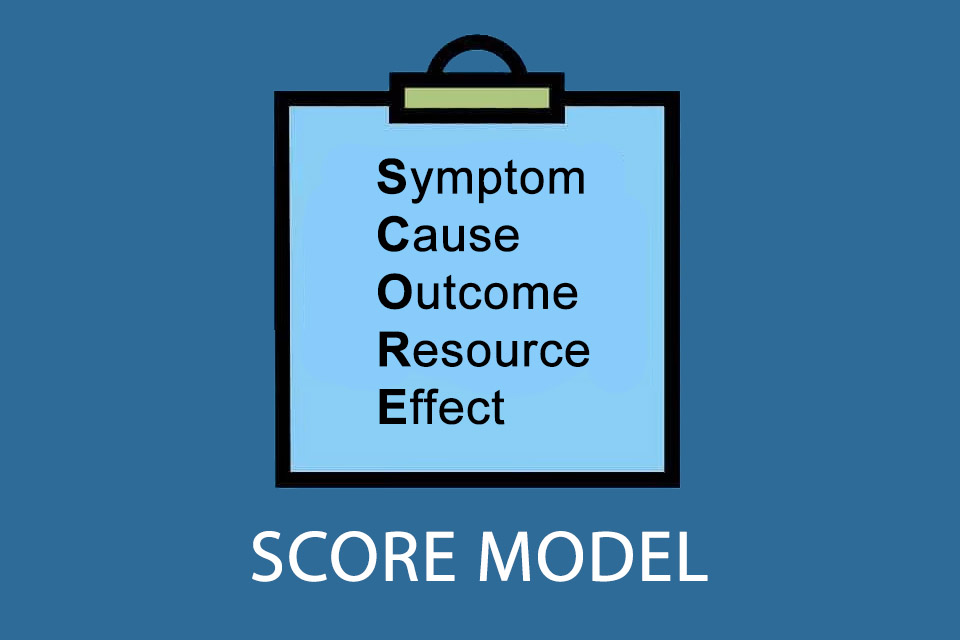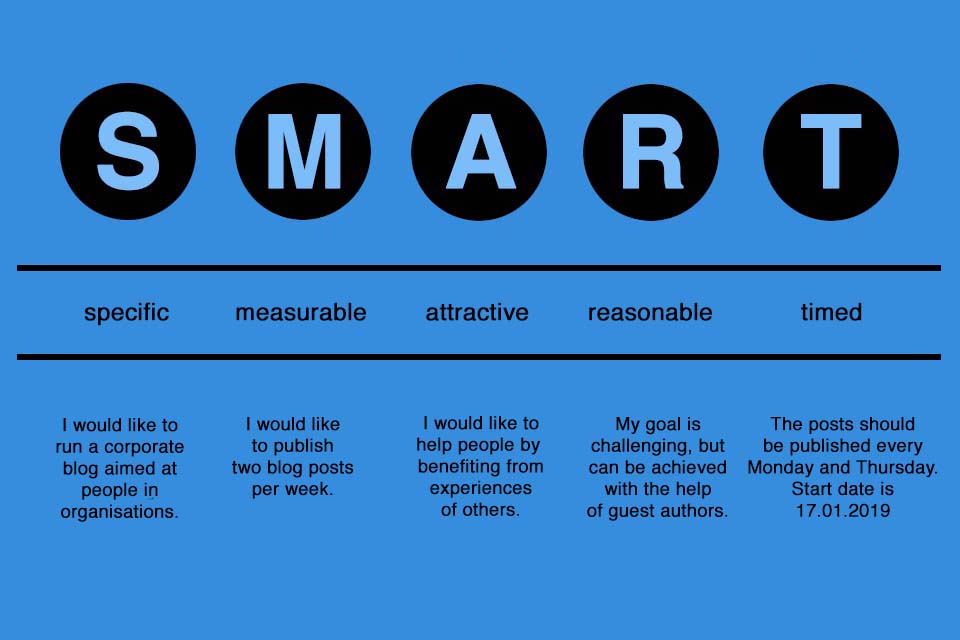What is the SCORE Model?
SCORE model – from the present to the desired state
The SCORE model – sometimes called the SCORE methode – was developed in 1994 by Robert Brian Dilts and Todd Eppstein, two experts in the field of Neuro-Linguistic Programming (NLP).¹ SCORE stands for
- Symptom (aspects of a perceived problem),
- Cause (underlying reasons for the symptoms),
- Outcome (result or goal to be achieved),
- Resource (tools to achieve the goal) and
- Effect (desired effect of achieving the goal).
It is an approach to analysing problems and challenges that is often used in coaching interventions. It is a tool for goal setting based on the past and present and addressing positive effects in the future. And it is a model for developing solutions to conflicts.
The building blocks of the SCORE model
The five steps of the SCORE model can be summarised into three groups:
- Problem State: The Problem State describes the current state or actual situation and includes both the symptoms and their causes.
- Solution State: The solution state defines the desirable state in the future, i.e. the outcome, and the desirable effects that will occur if the state is achieved.
- Intervention: The intervention declares the framework in which the desired change is activated. This is about finding out who or what contributes to overcoming the causes and symptoms in order to achieve the defined state.
In other words, it is about moving from a present to a desirable state. To make this happen, the different steps are often accompanied by a facilitator or coach.
Implementation of the SCORE model
The implementation of the SCORE model is oriented towards the present, which has its roots in the past, and aims at the future.
The following steps are useful in practice:
- Naming the symptoms. The collection of symptoms is the basis for a step-by-step change. The following questions help: Where do I stand, where do we stand? What is the problem and how does it manifest itself? What is burdening you and what do you want to change?
- Identifying the causes: The causes manifest themselves in the symptoms. Merely fighting symptoms cannot lead to a lasting improvement of the situation. This is where questions help, such as: What are the underlying causes? What causes the symptoms to be permanent? Who benefits from the fact that nothing changes?
- Definition of the outcome or objective. An objective describes a future state that is different from the current state and is desirable. The goal sets the direction for each individual or for entire teams. Questions such as help: here: How do you see yourself / your team? How do you imagine the future? How do you notice that the future differs positively from the present?
- Activating resources: Resources are a broad field. On the one hand, they can be contacts, financial means or technical equipment, on the other hand, they can also be experiences, skills, beliefs that help to eliminate the causes of the problems and to achieve the goals. The questions that help here are: What resource would help you / would help you to overcome the symptoms and causes? What skills or knowledge do you have to achieve your / your goal.
- Determining the desired effects. Effects are the “what for” of the goals, they express the motivation and the effect of achieving the goal. The following questions are helpful: What will change for you if the goal is achieved? What will be possible for you once the goal has been achieved?
In practice, it is advisable to document the insights gained and to use this documentation to derive measures to eliminate the problem or achieve the goal.
Impulse to discuss
How important is the role of the coach or facilitator in the SCORE model?
[1] Know-how für Träumer. Strategien der Kreativität – NLP & Modelling – Struktur der Innovation.
If you like the article or would like to discuss it, please feel free to share it in your network. And if you have any comments, please do not hesitate to send us a message.
Here you will find additional information from our Smartpedia section:



